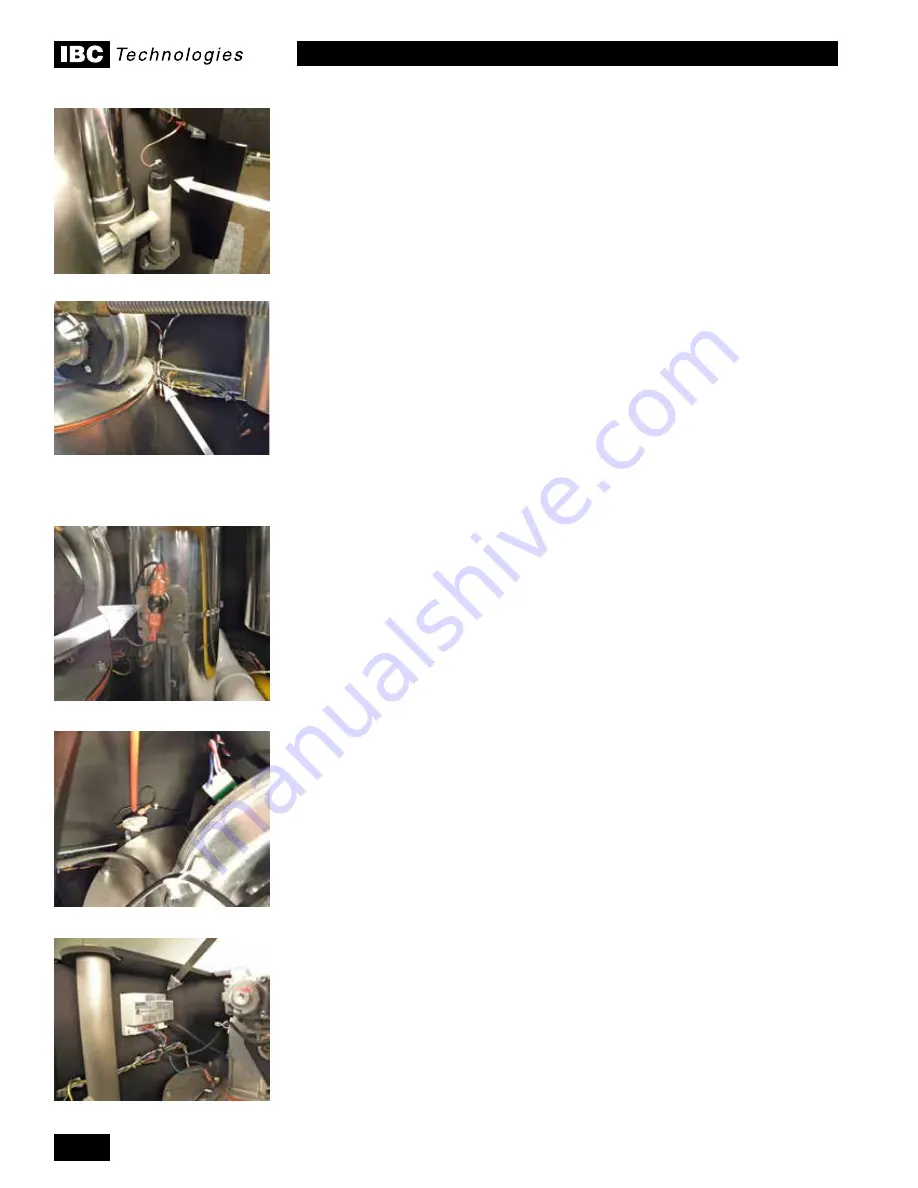
INSTALLATION AND OPERATION INSTRUCTIONS
5-4
SL 30-175, SL 45-260 MODULATING GAS BOILERS
Next, confirm that the circuit is properly powered. The supply voltage to the sensor
should be 13.8 VdC; to check, the simplest technique is to measure the circuit on
the face of the controller circuit board (vs. an attempt to splice into the harness /
connectors). see previous page for a presentation of the measurement points.
Finally, to measure the sensor output, connect a dC volt meter between points
“J501-33” (located on the footprint of the 34 pin connector – immediately below
the right leg of the lCd display - second pin from bottom right) and gnd (see
above). With the fan off, the measure should read 0.5VdC. With a Fan Pressure
of approx. 300, the meter will read 1.5v (approx.). note:- this component is a
sensor, not a switch; do not over-pressurize by blowing into the air reference
lines. Maximum pressure capacity is 40” w.c. @ 20 C but only 10” w.c. @ 5C.
5.2.4 Water Pressure Sensor
go to the
Advanced Diagnostics
screen, and check the top display line — inlet
Pressure. With the pumps at rest and system pressure of 12.5 psi, the
Inlet
Pressure
sensor value should read 235 +/- 5.
Check operation of the sensor by isolating the boiler from its system piping,
closing the system fill valve then cracking the pressure relief valve; the signal
should reflect declining pressure. If it remains “fixed”, drain boiler and replace
sensor, or dislodge any blocking debris from sensor inlet channel and reinsert.
5.2.5 Hi-Limit Switches (water, vent and UvHL)
Check resistance between leads. if resistance is very low, temperature should
be acceptable. if resistance is very high, temperature should be out of bounds.
a simple means of checking whether a high limit switch is open is by measuring
the aC voltage across the device. if the reading is 24 VaC the switch is open. if a
0VaC reading is shown, it is closed. neVer connect an ohm-meter or continuity
checker across a live circuit.
5.2.6 Ignition Module
there are two approved ignition modules - Fenwal (grey) and Capable Controls
(white). each have a red led lamp providing the following signals: Fenwal – 1
rapid flash on 1st entering Pre-purge, 3 rapid flashes upon
Failure to Ignite
After 3 Attempts;
the Capable Controls module provides a single flash at the
start of each Purge and Interpurge cycle, continuous rapid flashes during the 4
second spark interval, solid illumination following successful ignition until burner
shutdown, and a slow on/off cycle with a 3-try failure.
Flame current can be monitored on the Fenwal. Connect an electrical test
meter - set to read Microamps (symbol μA) to the two test pins at the top right of
the ignition module. recycle the boiler so it enters another trial for ignition and
monitor the flame current reading. When the burner ignites, a steady reading of
2-7 Microamps should be measured by your meter. the control will lock out if
the reading drops below 0.7 Microamps.
(see Section 5.3.1 - “Control Module
- Maximum ignition trials error”, and Section 5.3.2 - “Ignition problems”).
For
conversion from Fenwal to the Capable Control, specify iBC part# 240-049 – that
provides the module plus added wire lead and instructions.Flame current cannot
be monitored on the Capable Controls module..
5.2.7 Optional vent Temperature Sensor Kit
a vent temperature sensor can be installed on either boiler model. order iBC
Part #P-157a. this sensor enables the vent temperature to be displayed on the
lCd screen or monitored over the internet or a BaCnet system using the iBC
BiC (Boilernet interface Controller)
Water pressure sensor
Capable Controls ignition module
Water temperature high limit -
behind fan on pressure vessel (vent
stack removed in photo, for clarity)
Vent temperature high limit
Upper vessel temperature high limit
Summary of Contents for SL 30-175
Page 76: ...NOTES...
















































